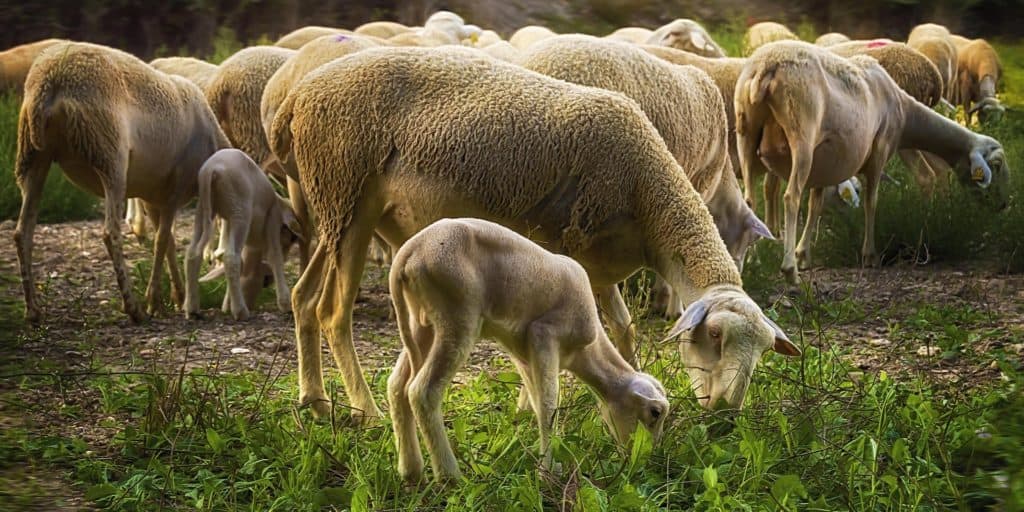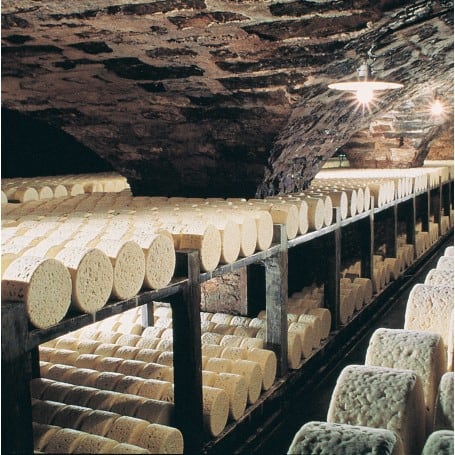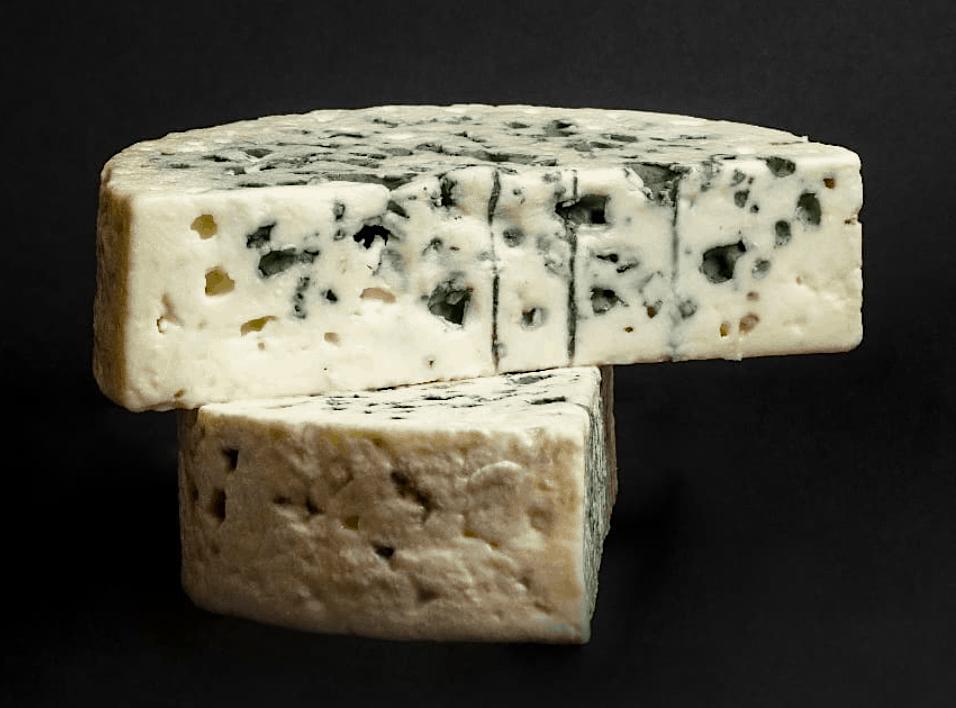The legend around the blue cheese is very interesting, a shepherd in the region Roquefort took his herd out and as the weather turned into a rainstorm he found shelter in a nearby cave, waiting for the storm to pass he decided to have a meal and took his bread loaf out along with some sheep milk cheese. As the storm grew stronger a lone young girl entered the cave, forgetting about his meal, the young shepherd started flirting with her. With only eyes for his new acquaintance as the storm abated they left the cave together totally forgetting about cheese and bread.
The next season the shepherd visiting once more the cave found his sheep milk cheese but not his rye bread but the cheese was different, it had blue mould on it, Roquefort was born.
You can get blue cheese from all over the world but you can only have Roquefort from the Roquefort region, it has some unique specificities:
- The breed of sheep must be Lacaunes and none other
- The mould used to create the blue veins is called Penicillium Roquefortis and can only be found in the caves of the region of Roquefort

Because of these specificities Roquefort became in 1925 the first cheese to benefit from the label PDO (Protected Designation of Origin).
The blue mold comes from the mould developed on the rye bread, so in the cave of the region loaves of rye bread are left in the humidity to develop this mushroom (Penicillium Roquefortis, that is a good bacteria of the family of probiotics), it is then turned into a powder that will be used in the cheese process to create the blue veins.

Fun fact : A 100gr of penicillium can create a 100t of Roquefort
The making of Roquefort follows these steps
- Milking Lacaunes ewes
- Within 48h max adding rennet to the milk to curd it
- Once curd breaking the it with a giant raquette like sieve leaving irregular size blocks of curd on the table
- It is strained once and laid on a table or gathered in small mould depending on the families of Roquefort makers
- Spreading the powdered bacteria, and put in final shape mold
- Drained for 3 days without using press, the last day it salted one side after the other
- Before going in maturation it’s jabbed to allow air inside the cheese where it will help developing the blue veins
- Maturation follows two steps, the first one is a fortnight in laying bare in rows in the caves, the second, the cheese is enveloped in pewter sheets called “cabanières” and left to mature for at least 3 months in the “fleurines caves”, the “Maître Cave” (Cavemaster) will decide when to open them and let wet and cold air entering the fleurine and the length of the maturation.

If you want to know more about blue cheese come and see us in Montmartre
